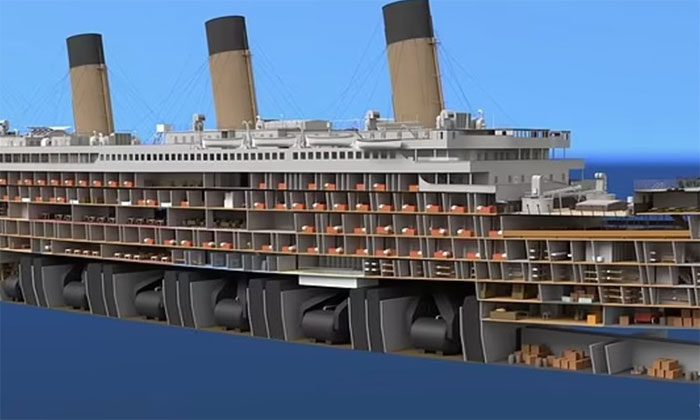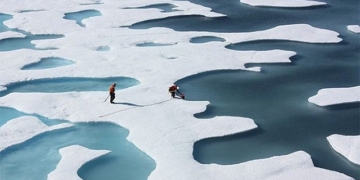Detailed cross-section images of the Titanic reveal the design of the ship before it collided with an iceberg and sank to the ocean floor.
(Video: Jared Owen).
The Titanic may be the most famous ship in history, sinking after hitting an iceberg during its first and only voyage across the ocean. American graphic designer Jared Owen shares a video that reveals the scale of the RMS Titanic through extremely detailed digital cross-sectional images of the luxury passenger liner. The footage simulates the Titanic from every angle before the ship set sail from Southampton 112 years ago, according to Mail.
“When they finished building the Titanic, it was the largest ship in the world,” Owen stated. “The ship was designed and constructed over 100 years ago when there were no computers or 3D design software. Everything was designed by hand. To me, that is incredible engineering and shipbuilding skill.”
Owen relied on various sources, including National Geographic, Encyclopedia Titanica, and the Titanic volume from the Haynes book series. He then used Blender, an open-source 3D content creation tool, to digitally recreate the Titanic. His video simulates all 10 decks of the Titanic, including the deck that housed most of the lifeboats on board. One reason the ship did not have enough lifeboats was that the designer did not want to clutter the deck and obstruct first-class passengers’ views of the Atlantic Ocean.

Cross-section of the Titanic.
Just below the deck is Deck A, also known as the promenade deck reserved for first-class passengers. Stretching nearly the entire length of the ship, the promenade deck offers ample outdoor space for strolling and enjoying the sea views. Below that is the cargo hold containing the engine room and boiler room, which was the first area to flood when the ship struck the iceberg.
Owen also revealed some design secrets of the ship, including lesser-known facts about the fourth and final funnel. Only three funnels were functional; the fourth was added for decoration to make the ship appear more imposing. However, it also served a purpose for ventilation below.
According to Owen, the RMS in the Titanic’s name stands for “Royal Mail Steamer”, indicating it was commissioned by the British royal family to transport mail and cargo. The Titanic carried approximately 6 to 9 million parcels on its journey to New York, according to the Smithsonian National Postal Museum. Of course, all the parcels were lost when the ship sank on April 15, 1912, about 2 hours and 40 minutes after the collision with the iceberg. The disaster resulted in an estimated 1,517 fatalities out of 2,224 people on board, more than 700 of whom were third-class passengers.
The wreck of the Titanic lies on the ocean floor about 648 km from the coast of Newfoundland, Canada, at a depth of approximately 3,810 meters. However, the wreck is rapidly deteriorating underwater and may disappear within the next 40 years.




















































